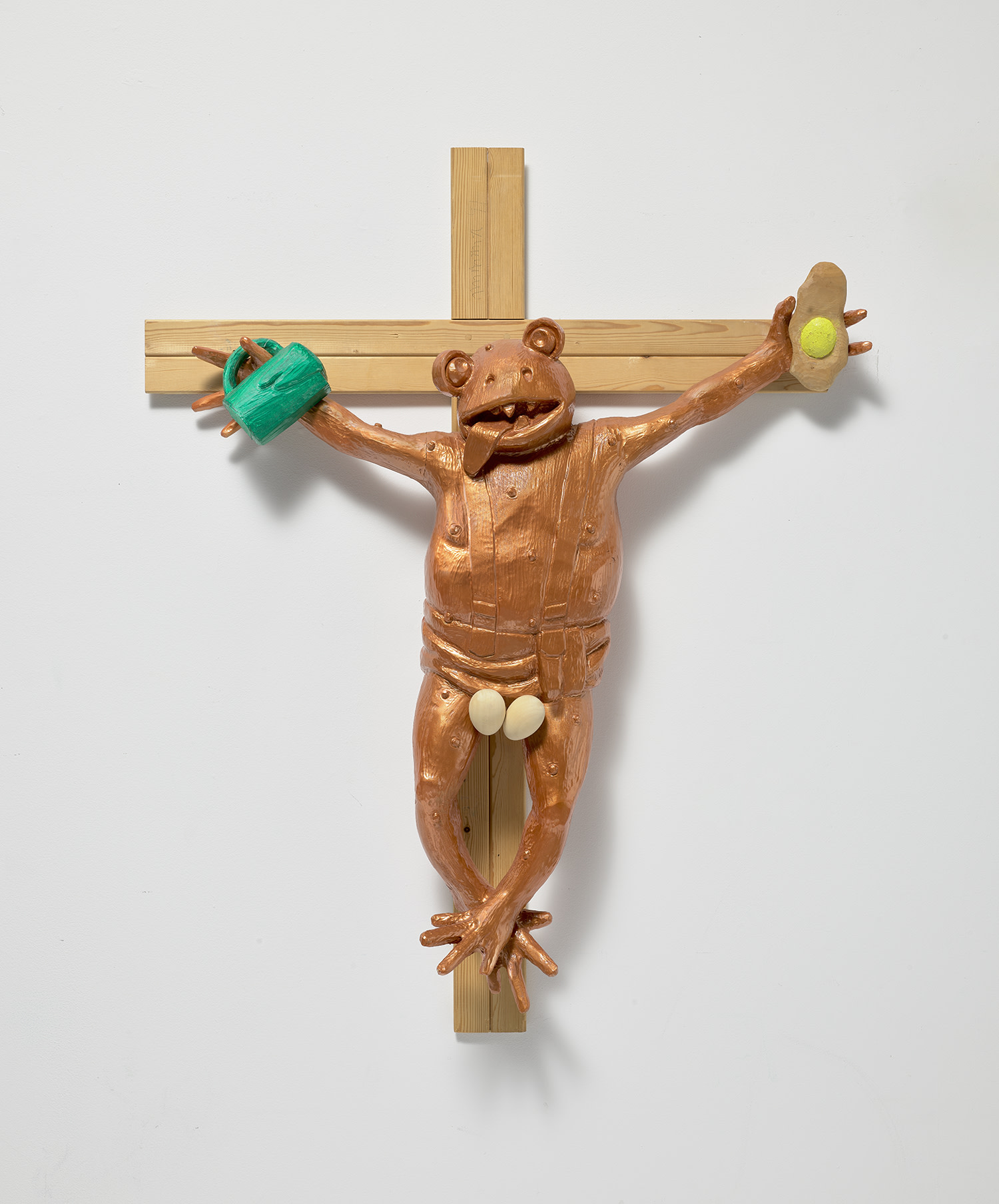





18
Martin Kippenberger
Zuerst die Füße (Feet First)
indistinctly signed and dated ‘Kippenberger 91’ upper centre
wood, automobile lacquer and steel nails
130 x 100 x 22 cm (51 1/8 x 39 3/8 x 8 5/8 in.)
Executed in 1991, this work is from a series of 5 unique variants plus 2 artist’s proofs.